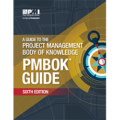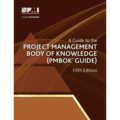
One of the most important jobs of the project manager is that of project resource management. Like a carpenter using a saw, like a pilot landing an airplane, like a programmer writing code, ask any project manager and they will tell you that managing the project resources is the day to day work they spend most of their time on.
Project resources include everything necessary to complete the project. For example,
- People
- Materials
- Tools/Equipment
- Knowledge/Expertise
- Facilities
- Infrastructure, for example, a database
In a perfect world, all of these resources would be available when we need them, perform the work flawlessly, and cost less than we budgeted for. But unfortunately it’s not a perfect world.
In the real world, however, resources are limited. Project managers must make sure the critical resources are available, materials arrive when they are needed, and project team members have the knowledge and experience necessary to produce the project’s deliverables to the applicable quality standards. For that reason, all three major project management methodologies specify a resource management plan (although the terminology varies).
Resource Management Plan
The Project Management Body of Knowledge (PMBOK) specifies the development of a Resource Management Plan. This plan is scaled to the size of the project – even the smallest projects need some consideration of resource availability and usage. It identifies the resources the project will need, how they will be acquired, and how they will be managed.
- Identification of Resources
A simple list of resources, for even the smallest projects, ensures that nothing gets forgotten. - Acquiring resources
Once you know which resources you need, you must decide how to obtain them. Outsourcing resources like heavy equipment is usually a major consideration. Where will they be purchased? When and how will they be purchased? Who will purchase them? - Roles and Responsibilities
The project team roles which are required to complete the project are identified. The authority and responsibility level of each role is defined. And the competence level (for example, junior, intermediate, or senior) is determined. Any special expertise required is identified as well. - Project organization charts
The organization charts serve as the hierarchical definition of the project team, and communicates the roles and responsibilities of everyone involved in the project. Subcontractors and consultants are often communicated on the organization chart as well. - Project team resource management
This section provides guidance on how the project resources will be acquired, managed, and eventually released. - Training
Most projects require ongoing training for team members, to develop knowledge that is crucial to the outcome of the project. - Team development
Humans are not like other resources in that they wish to leave the project with more career prospects than when they arrived. This takes the form of knowledge, expertise, and skills. If not developed, the project team members will leave before the project finishes, taking their expertise with them. - Resource control
Tools, equipment, materials, and supplies need to be tracked to ensure they arrive on time. They need to be inventoried and inspected to ensure they will perform the task required. - Recognition plan
Unlike other resources, human beings need recognition for work performed. When the project is complete, and at regular intervals throughout the project, the project team needs to be rewarded for their work.
Resource Calendars
 Resources might have been obtained, but they are not always available. Project team members go on vacation, or call in sick. Physical resources such as materials might arrive on site but require treatment before being usable. Electronic resources such as software or databases might require installation prior to being usable.
Resources might have been obtained, but they are not always available. Project team members go on vacation, or call in sick. Physical resources such as materials might arrive on site but require treatment before being usable. Electronic resources such as software or databases might require installation prior to being usable.
The availability of resources is referred to as a resource calendar. A simple resource calendar might look something like this:
- John is available for 30 hours per week in February and 40 hours per week in March. He is on vacation during the third week of March.
- The excavator requires an oil change every two months, which requires one full morning.
- The 3D printer will arrive before April 30, and will require two days of installation.
In theory, every resource has a resource calendar, although for small projects it often exists within the minds of the project management team.
The Resource List
The first step in project resource management is the development of a resource list. This list contains all of the resources required to complete the project.
To develop a resource list, you start with the end in mind. Every project has deliverables – products or services which are produced by the project. These deliverables are broken down into component parts in a process called a work breakdown structure (WBS). The WBS is similar to a task list, with the exception that that the WBS ties each activity to a deliverable. This is the PMBOK definition, however in practice the terms WBS and Task List are often used interchangeably.
Once the task list is developed, each task is assigned resources. For example, you may find it difficult to list the resources to build a house (without missing any). But if you broke it down into tasks, say, painting the walls, you can probably safely ensure you have all the resources you need.
To make matters more difficult, because nothing is ever that easy, resources often change throughout the project. It is not always possible to know what you will need at the beginning. Thus, you need to do the best you can and ensure that the project scope statement is as comprehensive and complete as you can get it.
Here is a checklist for developing the resource list, to ensure the resource is the right one for the job.
- Availability of resource
- Number (quanitity) of resources
- Grade (quality) of resource
- Type
- Attributes, eg. color, size, strength, weight, composition, etc.
- Reliability and maintenance requirements
- Transportation of resource
- Requires supporting tools eg. drill bits, technical support
- Has required knowledge/expertise
- Introduces other stakeholders, eg. An excavator might annoy neighbors by being noisy
Estimating Resources
 Of course, each resource must be estimated, because very few resources are available all the time without paying more for it. There are four main estimating techniques
Of course, each resource must be estimated, because very few resources are available all the time without paying more for it. There are four main estimating techniques
- Expert Judgment
If you’ve got a subject matter expert available, your work is almost done. The knowledge and experience that they will bring is second to none. Often there are experts within the greater organization, or people who have performed the work before, and most are willing to help you out. Because of their importance, you must do what you can to find a subject matter expert, but often there isn’t one available. - Analogous estimating
This refers to finding a previous, similar project and using its actual data to estimate the new project. If the last house required 100 man-hours for the framing, the new house is likely to also need 100 man-hours. If the new project is slightly different in a known way, an adjustment factor could be added, for example, the new house has 20% more square footage. You simply need to what the differences are between the two projects. - Parametric estimating
In this method, a unit rate from many projects is used, for example, framing costs $200/square foot. Often individual organizations have tracked these costs from previous projects, or they are available through industry associations. The main difference between parametric and analogous estimating is that instead of determining what is different from one project, you need to determine what is different from the average of many projects. For example, the framing on this house is made on a different kind of wood than most, which costs 15% more. - Bottom up estimating
This refers to estimating individual tasks and then rolling them up into an overall project estimate (i.e. from the bottom of the pyramid to the top). Although not technically an estimating method like analogous or parametric, it is an integral part of the estimating process.
Estimating resources is an art as much as a science, but it is important to get it right or the overall project estimate is not accurate.
Developing the Project Team
 Humans have more complex requirements than other resources. They want to leave the project with better career prospects than when they arrived. This means they need to obtain new knowledge or skills that they can use elsewhere.
Humans have more complex requirements than other resources. They want to leave the project with better career prospects than when they arrived. This means they need to obtain new knowledge or skills that they can use elsewhere.
In addition, throughout the duration of the project they want to feel like a valued member of the project team and that they are performing important work.
To develop the project team, utilize these six methods from the Project Management Body of Knowledge (PMBOK 9.4):
- Using open and effective communication
- Creating team-building opportunities
- Developing trust among team members
- Managing conflicts in a constructive manner
- Encouraging collaborative problem solving
- Encouraging collaborative decision making
If you take care of your project team, they will take care of you!
Managing the Project Team
The PMBOK also identifies five methods of managing the project team (PMBOK 9.5.2.1):
- Conflict management
In a project environment where people need to work together under scheduling and budget pressures, limited resources, and stakeholder priorities, conflicts are inevitable. As a result, conflict resolution can be one of the project manager’s greatest personal strengths. - Decision making
The project manager needs to make decisions to move the team, and the project, forward. This requires a relentless focus on the end goals of the project, while accounting for risk, team creativity, and environmental factors. - Emotional intelligence
It is important to understand the emotions of the project team members, in order to provide for their needs while ensuring that the project goals are met. - Influencing
The project manager must exercise influence over the project team, the organization, and other project stakeholders to ensure that everyone is satisfied by the outcome of the project. - Leadership
The project manager must be a project leader. This means that they must inspire people to follow their vision of the project and obtain buy-in for project decisions. Project success requires strong leadership.
Managing a project’s resources is a skill that project managers use every day. That’s why project success requires strong project resource management, and all of these key points must be learned to ensure your projects go smoothly.
Good luck!






